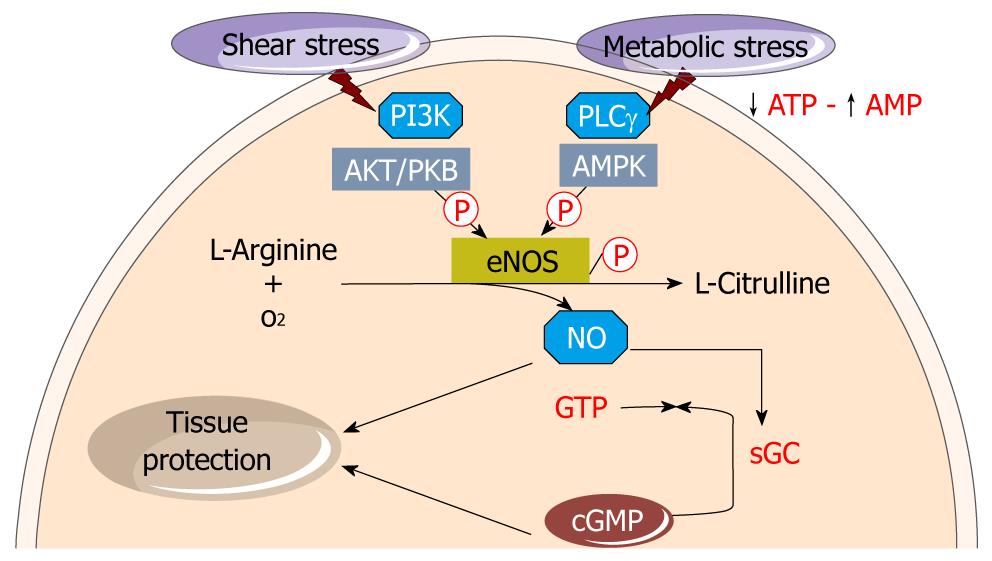Copyright
©2011 Baishideng Publishing Group Co.
World J Gastroenterol. Jun 28, 2011; 17(24): 2879-2889
Published online Jun 28, 2011. doi: 10.3748/wjg.v17.i24.2879
Published online Jun 28, 2011. doi: 10.3748/wjg.v17.i24.2879
Figure 1 Endothelial nitric oxide synthase-derived nitric oxide synthesis.
Shear stress leads to endothelial nitric oxide synthase (e-NOS) phosphorylation and through pathway involving phosphoinositide 3-kinase (PI3K) and Akt. Metabolic stress also phosphorylates e-NOS through the adenosine monophosphate kinase (AMPK) route. The coordination of signalling through these converging pathways allows for e-NOS activation. L-arginine is converted in the endothelium monolayer by the constitutive e-NOS to nitric oxide (NO) and L-citrulline. NO diffuses into both the vessel lumen and the vessel wall, thereby activating soluble guanylate cyclase (sGC) to produce cyclic guanosine monophosphate (cGMP) from guanosine 5’-triphosphate (GTP). NO in concert with cGMP involve tissue protection.
- Citation: Abdennebi HB, Zaoualí MA, Alfany-Fernandez I, Tabka D, Roselló-Catafau J. How to protect liver graft with nitric oxide. World J Gastroenterol 2011; 17(24): 2879-2889
- URL: https://www.wjgnet.com/1007-9327/full/v17/i24/2879.htm
- DOI: https://dx.doi.org/10.3748/wjg.v17.i24.2879









